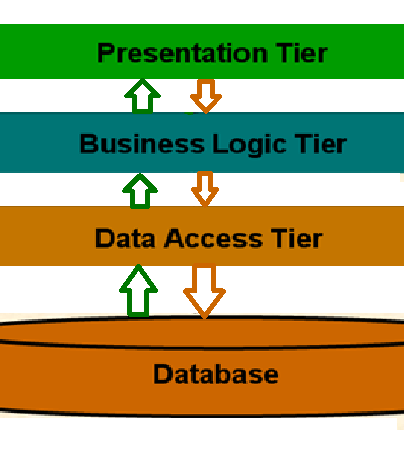Store Procedure in Sql
SQL Procedure:
A procedure in Sql Server is prepared SQL code that we save so we can
reuse the code again and again. So if we think about a SQL query that we
write again and again, write that query each time so solving this we save it as a procedure and
then just call the SQL procedure to execute the SQL code that the procedure.
A stored procedure is a sub routine available to applications that access a relational DBMS system. A stored procedure also know as proc, StoPro, proc,StoredProc, sp, StoreProc or SP .it is stored in the database.
Advantage of Store Proc:
- Stored procedures can be used to control transaction management System.
- SQL procedures run inside a transaction.
- Stored procedures can invoke from a trigger or a condition handler.
- We have ability to pass parameters into stored procedure,
Benefits of stored procedure:
Execution Pre compiled: SQL Server compiles each only one
time procedure and then reuse the execution plan. This is called repeatedly.
Reduced System (client/server) traffic: If network bandwidth is a slow in environment,
procedures can reduce long SQL queries to
a single line.
Reuse of code and abstraction programming: Stored proc can be used by more than one users
and client application programs.
Security control Enhancement: We can give users permission to execute that
particular procedure independently.
Type of creating SQL Server stored procedures:
- Creating simple SQLsp.
- Input parameters Using SQLsp
- Output parameters Using SQLsp
- Try Catch Using SQLsp

Create Storeprocedure in Sql
Structure of stored procedures:
Stored procedures are same as constructs in other
programming languages. Execution time depend on data in the form of input
parameters. Example is Creating Sp here.
SET ANSI_NULLS ON
GO
SET QUOTED_IDENTIFIER ON
GO
CREATE PROCEDURE <Procedure_Name, sysname, ProcedureName>
-- Add the parameters for the stored procedure here
<@Param1, sysname, @p1> <Datatype_For_Param1, , int> = <Default_Value_For_Param1, , 0>,
<@Param2, sysname, @p2> <Datatype_For_Param2, , int> = <Default_Value_For_Param2, , 0>
AS
BEGIN
SET NOCOUNT ON;
-- Insert statements for procedure here
SELECT <@Param1, sysname, @p1>, <@Param2, sysname, @p2>
END
GO
Other Post:
- Selected date from SQLdata base
- Number of Sunday in a particular month
- How to Print Div in Asp.net using java Script.
- Header checkbox.
- Asp.net checkbox with Gridview control.
- Checkboxlist Using JavaScript.
- Asp.net checkList control.
- Label Control in asp.net.
- Textbox asp.net control
- SubString from String Using JS.
- ImageButton Control
- ImageButton control
- Watch video here



Comments
Post a Comment